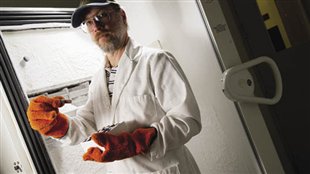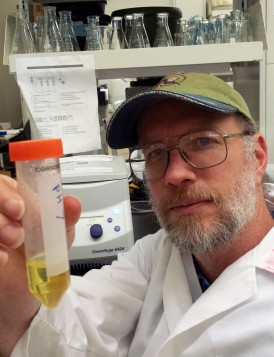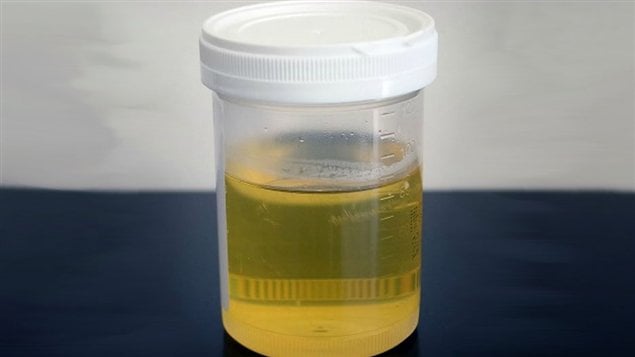When going for medical tests, patients are often asked for a urine sample. Currently, medical textbooks list only between 50 to 100 chemicals known in urine, and clinical testing for diagnostic purposes involves only six or seven chemicals.
Researchers at the University of Alberta in western Canada have now identified up to 3,000 chemicals in our urine. The implications for these new findings could mean cost savings and less invasive procedures for hospitals and patients as they seek to analyse fluids for indications of illnesses.

For millennia, doctors have studied urine to get an idea of what’s going on in the human body, from ancient Egyptians, to Greeks, to medieval doctors who created a colour-wheel to diagnose diseases.
Without knowing much about it, they seem to have instinctively understood it was an important indicator of what’s going on in the body.
According to Dr Wishart, “Urine reflects what we eat, breathe, drink. It reflects what goes on in our large intestine, it reflects what’s going on in our kidneys, our liver. It’s reflective of all the body functions. So it tells us as much, perhaps even more, than what the human genome tells us.”
It can also determine what people have been eating and drinking, what drugs they are taking and even what pollutants in the environment they have been exposed to.
The University of Alberta research, published in the scientific journal PLOS One, was an intensive project of over seven years and involving some 20 researchers including lead-author, post-doctoral fellow, Ms. Souhaila Bouatra.
It also involved developing new techniques. They began by computerized data-mining of all documented literature and studies of urine over the past 100 years, then cross-referencing and re-testing certain findings.
This chemical inventory—which includes chemical names, synonyms, descriptions, structures, concentrations and disease associations for thousands of urinary metabolites—is housed in a freely available database called the Urine Metabolome Database, or UMDB. (metabolome= metabolism + genome)
The UMDB is a worldwide reference resource to facilitate clinical, drug and environmental urinalysis, and is maintained by The Metabolomics Innovation Centre, Canada’s national metabolomics core facility.

Dr David Wishart says with this new information, less invasive, cheaper, and faster diagnostic testing for illness will soon be available (photo: Chris Reid, U of Ab)
This is part of the The Human Metabolome Project, launched by Wishart’s lab in 2005, has catalogued about 40,000 different chemicals found in the human body.
Along with the literature-mining, which clarified and unified such things as terminologies and names of compounds, the research team also made extensive use of analytical chemistry equipment to perform testing.
This involved technology such as nuclear magnetic resonance spectroscopy, somewhat like magnetic resonance imaging (MRI) that people may be more familiar with. A radio signal is sent into a test tube in the presence of a very strong magnet, which reflects various portions of the signal to be sent back. With software newly developed in conjunction with Edmonton company Chenomx, the signals were then interpreted to determine the chemical structures of the test materials, and then the various chemicals in the urine samples were analyzed. Other processes involved a variety of chromatography and spectrometry technologies.
The study found hundreds of chemicals which are not present in blood and which could potentially be of great clinical interest.
Dr Wishart notes that with this new list, the use of urine in diagnostic testing will increase in importance. Medical personnel will be able to perform tests more quickly and at much reduced costs, and these tests could replace current more invasive techniques like colonoscopies and blood sampling.
In particular, he notes that new urine-based diagnostic tests for colon cancer, prostate cancer, celiac disease, ulcerative colitis, pneumonia and organ transplant rejection are already being developed or are about to enter the marketplace, thanks in part to this work.
The precision of these tests also opens the door to personalized health care: “You can actually have a metabolic profile that could be used to diagnose, or predict, or prognosticate, or assess the risk for a whole bunch of different conditions.”
The chemical inventory from the current research—which includes chemical names, synonyms, descriptions, structures, concentrations and disease associations for thousands of urinary metabolites—is housed in a freely available database called the Urine Metabolome Database, or UMDB. The UMDB aims to be a worldwide reference resource to facilitate clinical, drug and environmental urinalysis, and is a part of the The Human Metabolome Project, launched by Wishart’s lab in 2005. This project has catalogued about 40,000 different chemicals found in the human body and is maintained by The Metabolomics Innovation Centre, Canada’s national metabolomics core facility
Dr Wishart says, “When we look in urine we can see some of these things that are about to happen or are a few years away from happening. The goal is that if we have that information, then we can start using the readouts to predict if someone is going to develop colon cancer, or heart disease, or Alzheimer’s“
He adds While the human genome project certainly continues to capture most of the world’s attention, I believe that these studies on the human metabolome are already having a far more significant and immediate impact on human health.” –
This multi-year, multimillion-dollar research effort was supported by Genome Canada, Genome Alberta, the Canadian Institutes of Health Research, the National Research Council, the National Institute for Nanotechnology, Alberta Innovates Health Solutions and Alberta Innovates Bio Solutions.
Metabolomics Innovation Centre U of Ab







For reasons beyond our control, and for an undetermined period of time, our comment section is now closed. However, our social networks remain open to your contributions.